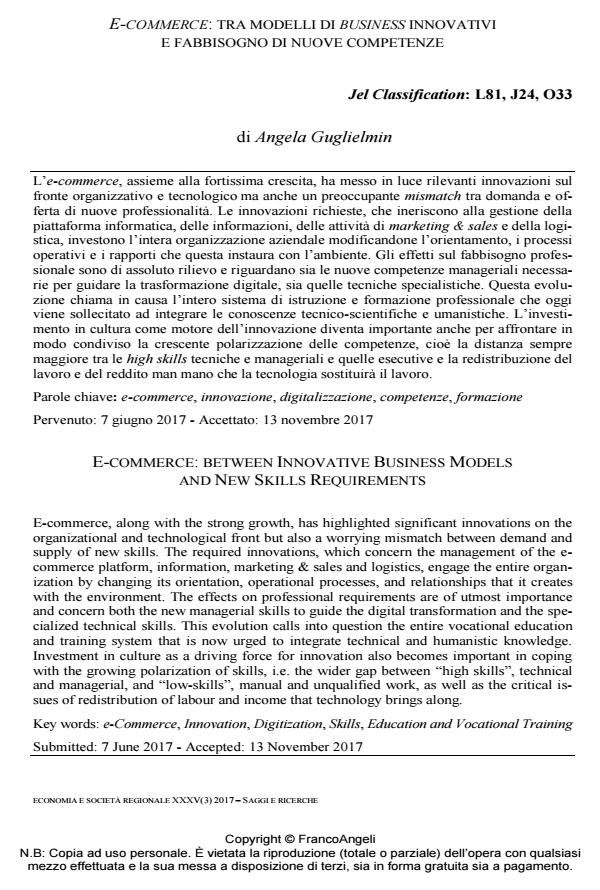E-Commerce: between innovative business models and new skills requirements
Journal title ECONOMIA E SOCIETÀ REGIONALE
Author/s Angela Guglielmin
Publishing Year 2018 Issue 2017/3
Language Italian Pages 17 P. 131-147 File size 332 KB
DOI 10.3280/ES2017-003007
DOI is like a bar code for intellectual property: to have more infomation
click here
Below, you can see the article first page
If you want to buy this article in PDF format, you can do it, following the instructions to buy download credits

FrancoAngeli is member of Publishers International Linking Association, Inc (PILA), a not-for-profit association which run the CrossRef service enabling links to and from online scholarly content.
E-commerce, along with the strong growth, has highlighted significant innovations on the organizational and technological front but also a worrying mismatch between demand and supply of new skills. The required innovations, which concern the management of the ecommerce platform, information, marketing & sales and logistics, engage the entire organization by changing its orientation, operational processes, and relationships that it creates with the environment. The effects on professional requirements are of utmost importance and concern both the new managerial skills to guide the digital transformation and the specialized technical skills. This evolution calls into question the entire vocational education and training system that is now urged to integrate technical and humanistic knowledge. Investment in culture as a driving force for innovation also becomes important in coping with the growing polarization of skills, i.e. the wider gap between "high skills", technical and managerial, and "low-skills", manual and unqualified work, as well as the critical issues of redistribution of labour and income that technology brings along.
Keywords: E-Commerce, Innovation, Digitization, Skills, Education and Vocational Training
Jel codes: L81, J24, O33
Angela Guglielmin, E-Commerce: tra modelli di business innovativi e fabbisogno di nuove competenze in "ECONOMIA E SOCIETÀ REGIONALE " 3/2017, pp 131-147, DOI: 10.3280/ES2017-003007